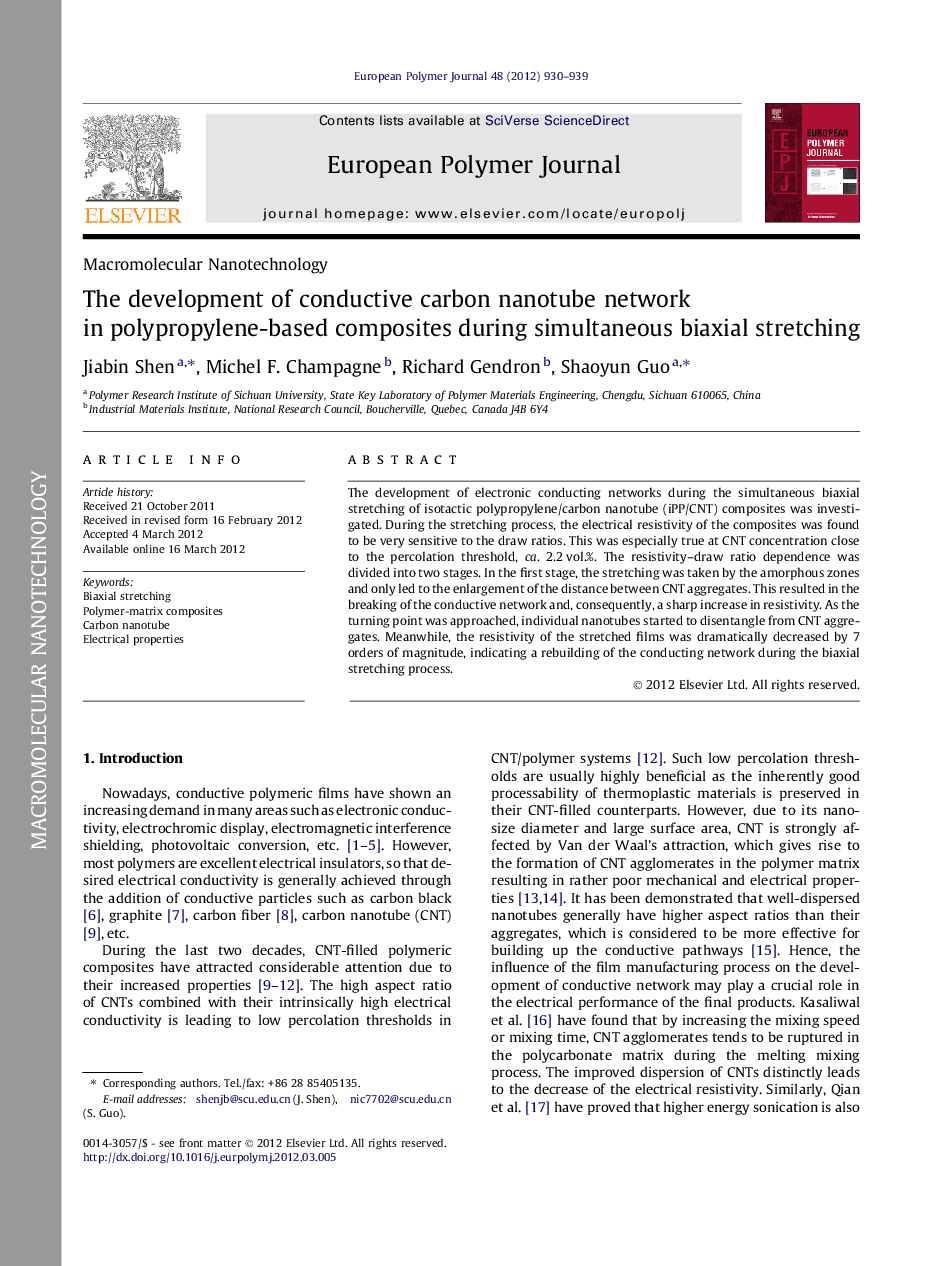| Article ID | Journal | Published Year | Pages | File Type |
|---|---|---|---|---|
| 1400561 | European Polymer Journal | 2012 | 10 Pages |
The development of electronic conducting networks during the simultaneous biaxial stretching of isotactic polypropylene/carbon nanotube (iPP/CNT) composites was investigated. During the stretching process, the electrical resistivity of the composites was found to be very sensitive to the draw ratios. This was especially true at CNT concentration close to the percolation threshold, ca. 2.2 vol.%. The resistivity–draw ratio dependence was divided into two stages. In the first stage, the stretching was taken by the amorphous zones and only led to the enlargement of the distance between CNT aggregates. This resulted in the breaking of the conductive network and, consequently, a sharp increase in resistivity. As the turning point was approached, individual nanotubes started to disentangle from CNT aggregates. Meanwhile, the resistivity of the stretched films was dramatically decreased by 7 orders of magnitude, indicating a rebuilding of the conducting network during the biaxial stretching process.
Graphical abstractFigure optionsDownload full-size imageDownload as PowerPoint slideHighlights► The development of CNT network in PP during biaxial stretching is studied. ► Higher stretching temperature is beneficial to recovering the CNT network. ► A deforming mechanism of CNTs during biaxial stretching is proposed.
